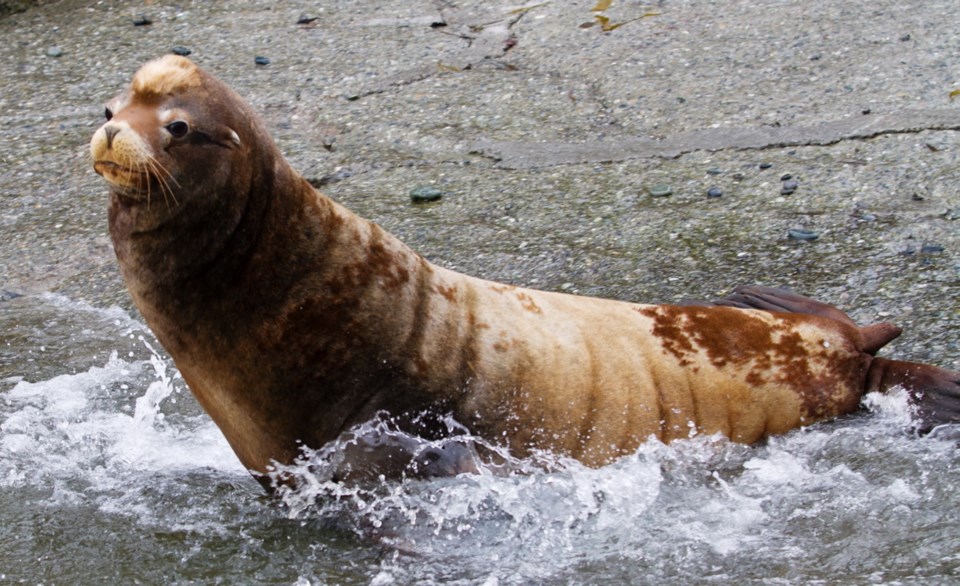It’s tough to persuade a suffering 1,000-kilogram Steller sea lion to stay still so that the fishing gear or garbage slowly killing it can be removed.
Approaching a fully alert sea lion is not usually an option, said marine mammal biologist Wendy Szaniszlo of Ucluelet, but using a tranquilizer dart is a tough call — if the animal makes it to the water before being caught, it can drown.
Szaniszlo hopes a workshop being held today at the Vancouver Aquarium will result in some innovative ways to help the mammals, which are considered critically endangered in some areas.
“Over a five- to six-year period, I had 408 records of entanglements in Clayoquot Sound and Barkley Sound,” said Szaniszlo, who has received funding from the Canadian Wildlife Federation and Clayoquot Biosphere Trust to study entanglements.
The best ideas from the workshop, which includes experts from B.C., Alaska and Washington, will be used this summer in trials.
“My hope for the workshop is that we can identify some of the resources required to disentangle sea lions. The personnel and equipment — everything that is needed to respond — and also the techniques,” Szaniszlo said.
Ideas include using a noose on the end of a pole or a gun that shoots a restraining net over the animal.
The idea for the workshop was born after Szaniszlo approached Marty Haulena, a veterinarian at the Vancouver Aquarium veterinarian, and Paul Cottrell, Fisheries and Oceans Canada marine mammal co-ordinator, about the issue.
Haulena said knowledge-sharing should save sea lions’ lives.
“We have been working closely with the U.S. and tranquilizing is becoming more of an option,” he said.
New drugs are safer and, when the animals slip into the water, they tend to go into sleep mode, rather than drowning, Haulena said.
It is also a matter of organizing resources, from permits to funding, and groups such as the whale-watching fleet have come forward with offers of boats and logistics, Haulena said.
“It is really nice to see everyone is concerned and see groups coming together to figure out what can be done,” he said.
The culprit in entanglements is usually fishing gear such as ropes and rubber bands from crab traps and fishing line.
However, extra-strong packing bands from crates are a growing problem, Szaniszlo said.
There was even an animal with a Frisbee around its neck, she said.
“They are very curious animals. They will poke their head around anything and sometimes they get tangled,” she said.



